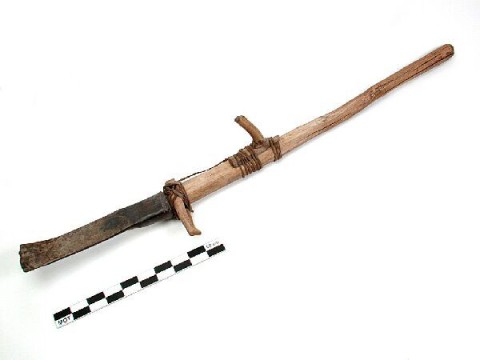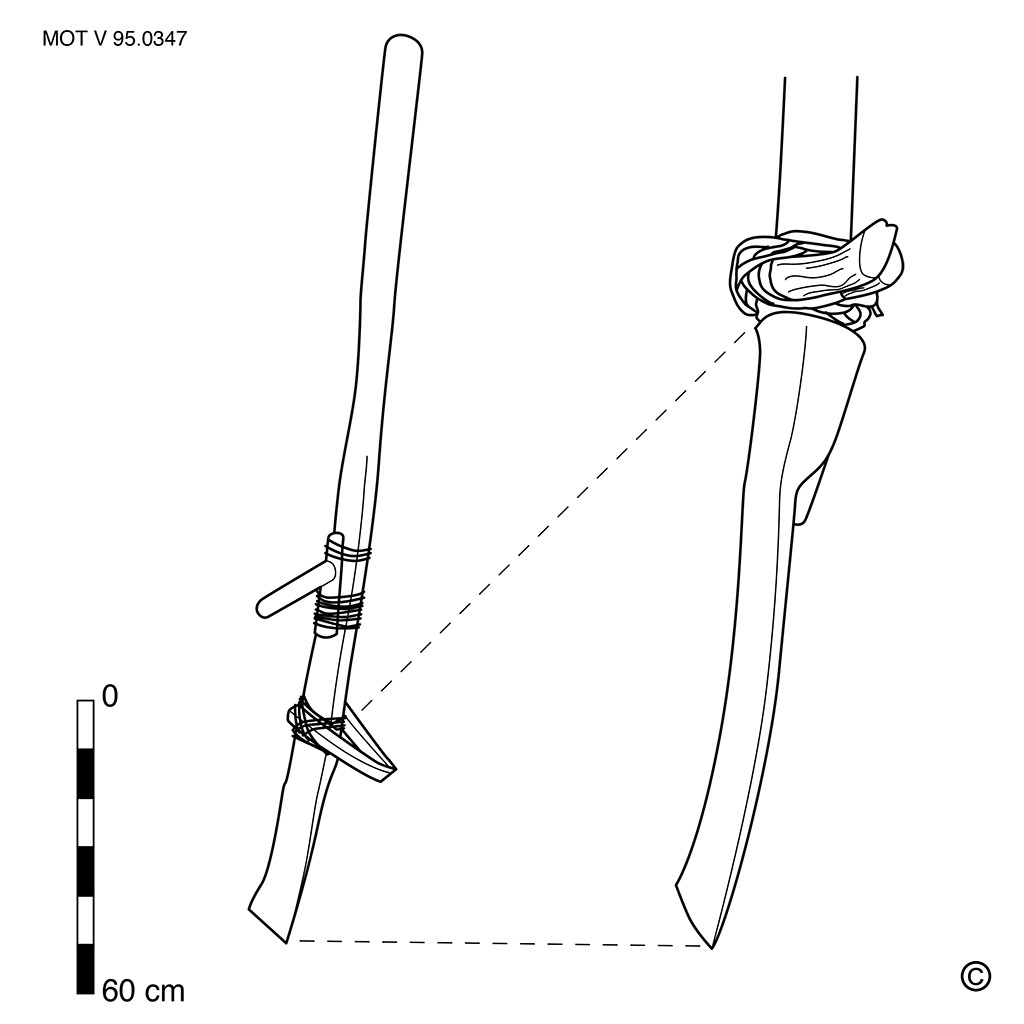Chaquitaclla
identifier
craft
holotype
alias
The chaquitaclla (1) (pronounced tcha-ki-tak-li-ja) is a typical agricultural implement in the Andes mountains of southern Peru and northern Bolivia. The men use them to work fallow soil by tilting the clods - as with the Spanish Laya, after which the women pow the potato tubers by hand (2). It is not uncommon for five men to work side by side; then they tilt a whole bar in one go.
The chaquitaclla evolved from a digging stick to a tool with a sharp metal tip, a curved or straight handle, and a footrest. It is about 1 to 1.5 meters long and has a diameter of about 6 cm. The footrest consists of two poles of approx. 20 cm long that are tied parallel to each other at a height of approx. 45 cm. The wooden handle is tied to the shaft with strips of llama or cow leather. When working on steep slopes, a lower-placed handle - close to the footrest - is more convenient for balancing.
The stem fits into the socket of the blade, which is about 7-10 cm wide and 40 cm long. If no metal is available for the working part, the wooden point is hardened in the fire.
We find a similar tool in the Hebrides Islands and in China (3).
See also the spade. [MOT]
(1) Quechua benaming van dit handwerktuig (GADE & RIOS: 3). Zie artikel: chaquitaclla, the native footplough and its persistence in central andean agriculture
(2) DENDERMONDE: 37-38 chaquitaclla.
(3) GADE & RIOS: 3.


